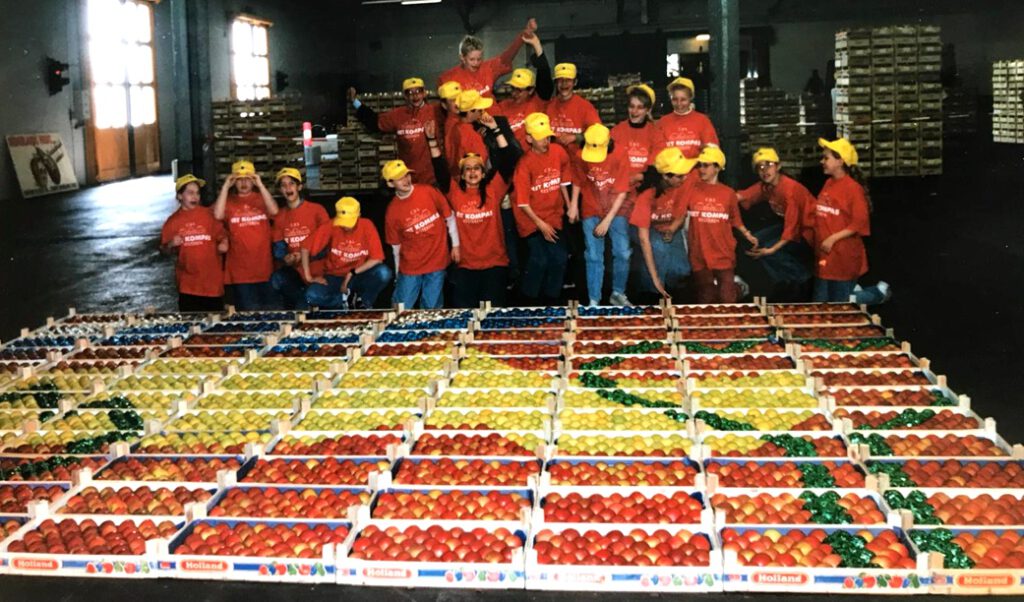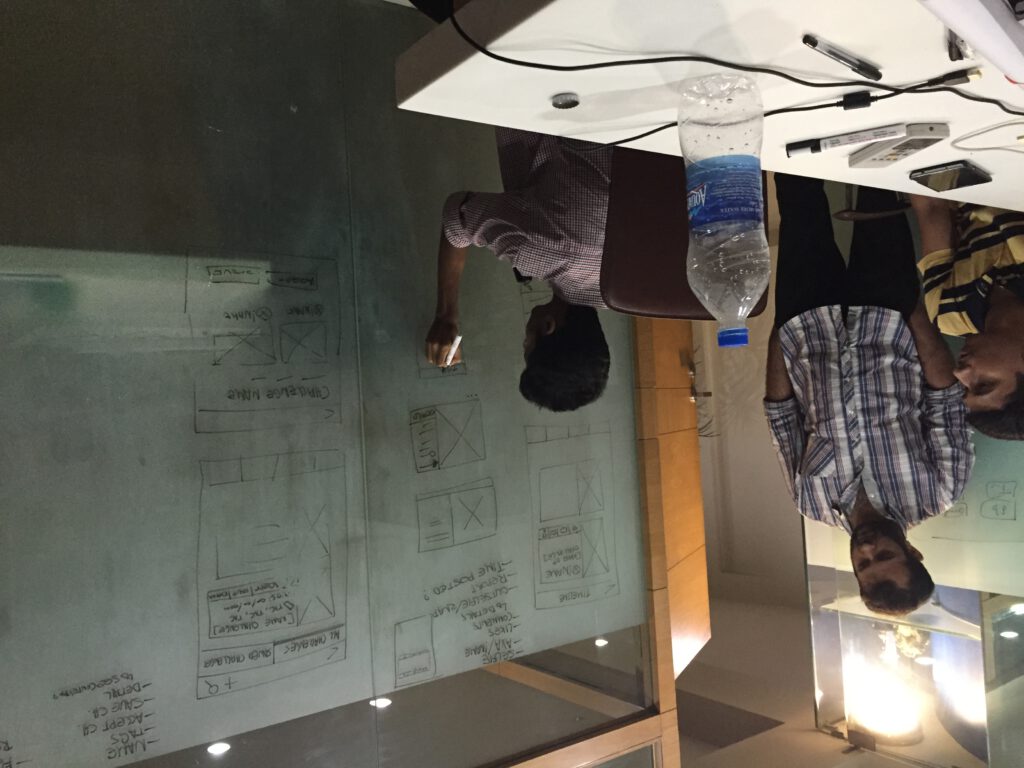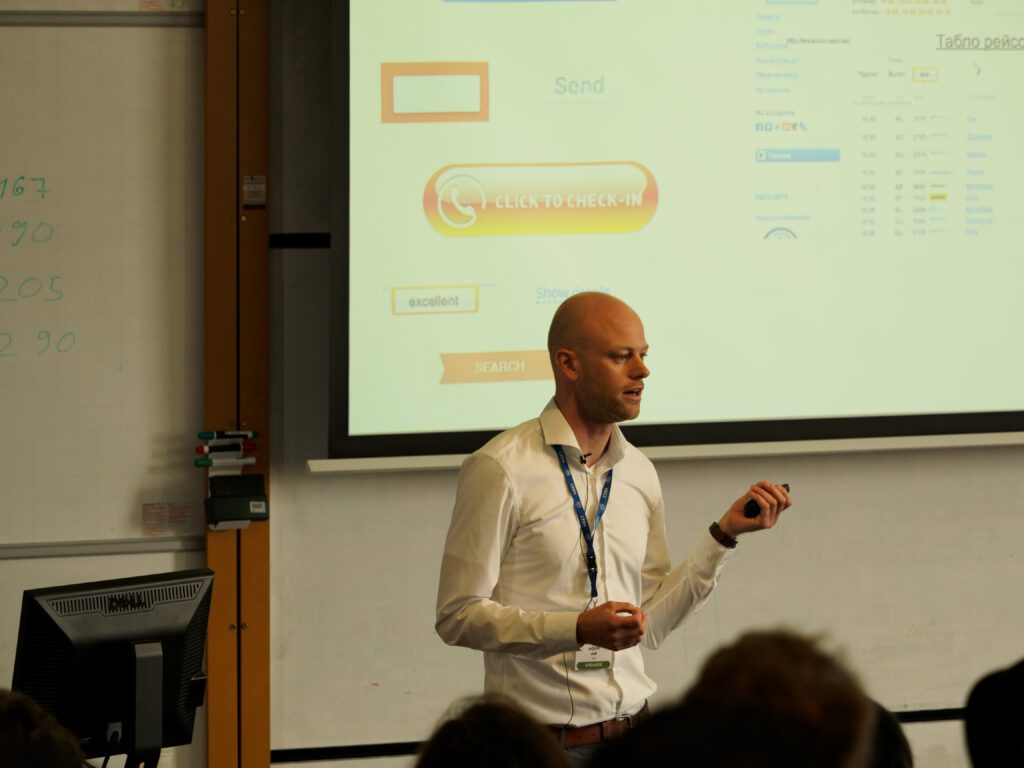My Career
In my teenage years, I wanted to make things work
In my early 20’s, I wanted to make things pretty
In my late 20’s I wanted to make things useful
In my early 30’s, I wanted to make things meaningful
In my late 30’s, I wanted to enable others to make things meaningful
ln my 40's, I want ethics to be at the core of the tech world
1. Primary School
I delivered my first pixel perfect design when my class won the Dutch championships apple mosaic. My design laid out all apples perfectly, illustrating Dutch folklore, including the (in)famous wooden shoes and tulips.
I am the body being lifted up. 😀

2. Secondary school
I had the privilege to shadow my dad, who ran an advertisement agency. He taught me the power of communication and visual design. I taught him “the internet”. His clients wanted to jump on the 90’s internet-bandwagon, which gave me an opportunity to design and develop their corporate websites.
3. College
I completed my interaction design degree at the University of Applied Sciences in Amsterdam, while working a part-time job as a (web)designer and developer at a digital agency.

4. First full time job
The trust that I earned during my first professional years, gave me an opportunity manage a diverse portfolio of clients in my late 20’s. Together with them, I designed a great variety of web-based applications. In parallel, I managed a development team that delivered these products.
5. Freelance life
My Dutch life gave me meaningful experiences but the world has more to offer. I found a variety of UX consultancy opportunities, from big organizations like the European Union to small start-ups and worked in countries like Malta and India.


6. CERN
Understanding domestic societies on their own is enriching, but working in an international organization, where different cultures come together, makes you really understand diversity. I feel privileged to have helped an organization like CERN – which helps the world move forward through science – to become design centred.
Future
Design leadership means finding a balance between the design craft and the employee experience. Having the best the design approach in place isn’t worth much if talent decides to leave.
I help organizations design better products, but I also support management in looking beyond performance dashboards to ensure human centred decision making.
We don’t have to compromise on our people to increase our profit. The more we care about our talent, the more they excel as individuals and in a team. Better products and higher talent attractiveness are the outcome.
Have a look at my LinkedIn profile for my full career overview.